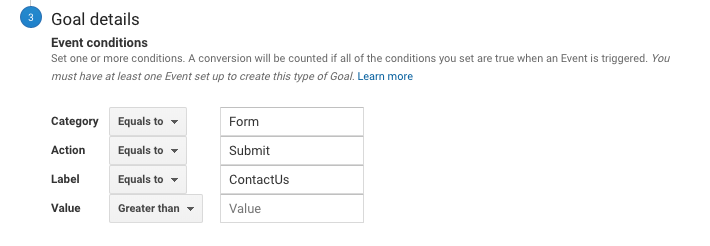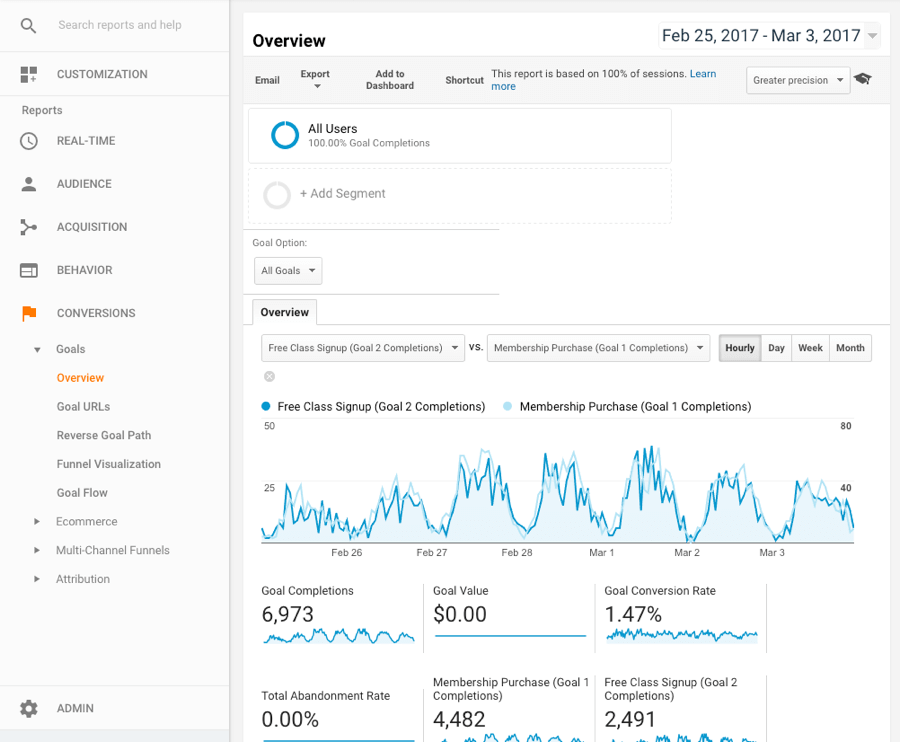Discovering What Data Is Google Analytics Goals Unable to Track
Discovering What Data Is Google Analytics Goals Unable to Track
Blog Article
Demystifying Google Analytics Limitations: Discover What Information Goals Can not Track
In the world of electronic analytics, Google Analytics stands as an effective device that gives important insights right into website efficiency and user actions. From the intricacies of individual interaction with dynamic content to the intricacies of cross-device user journeys, these restrictions dropped light on locations that may remain obscured from typical analytics point of views.

Individual Communication With Dynamic Content
User interaction with dynamic web content plays a crucial function in recognizing user behavior on sites and maximizing the general user experience. By tracking customer communications with vibrant web content, website proprietors can acquire important insights into user engagement, choices, and behaviors - what data is google analytics goals unable to track.
Google Analytics offers various devices to track individual interactions with vibrant content, such as event tracking and virtual pageviews. Event monitoring allows you to keep track of specific customer actions, like clicking a switch or watching a video, providing information on just how individuals connect with vibrant elements. Virtual pageviews can be made use of to track communications that do not result in a new web page load, supplying a detailed sight of individual involvement with vibrant content. By assessing this information, internet site proprietors can make enlightened choices to enhance individual experience and drive conversions.
Cross-Device Individual Journeys
How can modern-day analytics devices track the facility courses users take across multiple devices in their on-line trips? Cross-device user journeys provide a considerable difficulty for tracking and assessing individual actions properly. As customers connect with applications or web sites making use of different gadgets such as mobile phones, tablet computers, and desktops, it ends up being critical to recognize exactly how they move in between these systems to enhance individual experience efficiently.
Google Analytics faces constraints in tracking cross-device customer trips as a result of privacy issues and technical restrictions - what data is google analytics goals unable to track. While it can supply understandings right into private devices' interactions, tracking a smooth customer trip across several gadgets stays a difficulty. This limitation can lead to incomplete information and fragmented user insights, making it hard for businesses to develop a unified view of the client journey
To resolve this concern, services can make use of advanced analytics tools that offer cross-device tracking capacities, allowing them to gain a much more alternative understanding of customer habits. By leveraging these tools, businesses can connect the void in tracking cross-device customer journeys and optimize their digital methods for a seamless user experience.
Offline Conversions and Attribution
As companies browse the obstacles of tracking cross-device individual journeys, an additional critical facet to consider is the realm of offline conversions and acknowledgment in the world of information analytics. While Google Analytics offers useful understandings into online user habits, it drops short when it involves tracking conversions that happen offline. This restriction poses a significant obstacle for businesses that have both online and offline sales networks.
Offline conversions, such as acquisitions made in physical shops or with telephone call facilities, are vital to understanding the total client journey. Without the capability to attribute these offline review conversions to specific on-line interactions, companies may struggle to precisely gauge the influence of their electronic advertising efforts.
To address this space, companies can explore alternate solutions such as incorporating CRM systems with on the internet analytics devices or using one-of-a-kind promo codes that can be mapped back to on-line campaigns. By connecting the gap in between online and offline information, companies can get an extra extensive understanding of their consumers' actions and boost their general advertising methods.
Person User Identification
In the world of information analytics, the capacity to accurately identify individual users throughout different on the internet touchpoints is an essential obstacle for organizations seeking to personalize and maximize their advertising and marketing techniques. While Google Analytics gives valuable insights into customer actions and interactions, it falls short in enabling the identification of particular individuals as a result of privacy problems and technological restrictions. Google Analytics uses distinct identifiers such as cookies to track individual sessions and habits, however these do not relate to identifying private customers in an individual sense.

Information From Secure Pages
Despite the boosting prevalence of protected web pages on web sites, obtaining information from these encrypted sources provides a special obstacle for digital analytics platforms like Google Analytics. Safeguard pages, suggested by HTTPS in the link, encrypt information traded between the user's browser and the internet site's web server to make certain privacy and safety. While this encryption is important for protecting delicate info, it likewise presents constraints for tracking customer actions and gathering analytics information.
Google Analytics deals with obstacles in accumulating thorough details from protected pages because of the file encryption methods in location. As a result, specific information points such as recommendation resources, keyword searches, and even some individual communications may not be completely recorded when customers access an internet site via a safe and secure connection. This limitation can affect the precision and completeness of the information evaluation, causing voids in comprehending customer habits and preferences on safe pages.
To navigate this obstacle, digital analysts may require to explore different monitoring methods or take advantage of other devices especially designed to collect understandings from safe web pages. By adjusting strategies to accommodate these constraints, organizations can still obtain valuable analytics in spite of the constraints presented by encrypted links.
Final Thought
Finally, Google Analytics has constraints in tracking customer communication with dynamic web content, cross-device individual trips, offline conversions, specific user identification, and data from safe pages. These limitations impede an extensive understanding of customer habits and may lead to voids in information evaluation. Despite its beneficial insights, Google Analytics may not provide a complete image of user interaction throughout various touchpoints. It is necessary for organizations to be knowledgeable about these constraints and take into consideration extra tools for a much more holistic sight of their information.
Customer communication with vibrant material plays an important function in comprehending user habits on web sites and optimizing the overall user experience. By tracking user interactions with dynamic material, site proprietors can obtain useful insights right into customer engagement, choices, and actions.
Google Analytics uses special identifiers such as cookies to track user sessions and habits, yet these do not relate to identifying private users in an individual feeling.
As an outcome, certain data points such as referral sources, keyword searches, and even some user communications may not be completely recorded when individuals access an internet site via a secure link.In verdict, Google Analytics has restrictions in tracking individual communication with vibrant material, cross-device user journeys, offline conversions, private customer recognition, and data from secure web pages.
Report this page